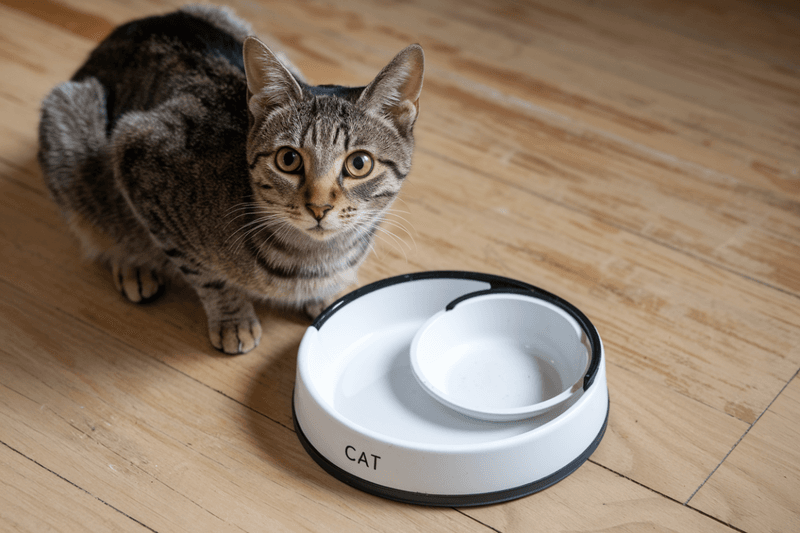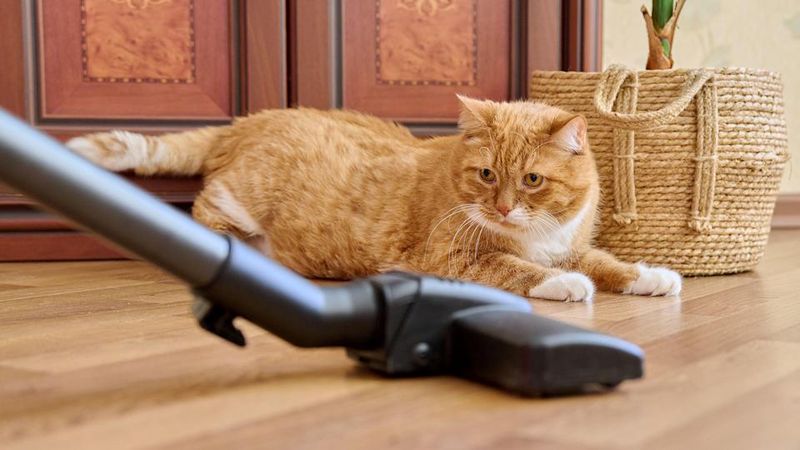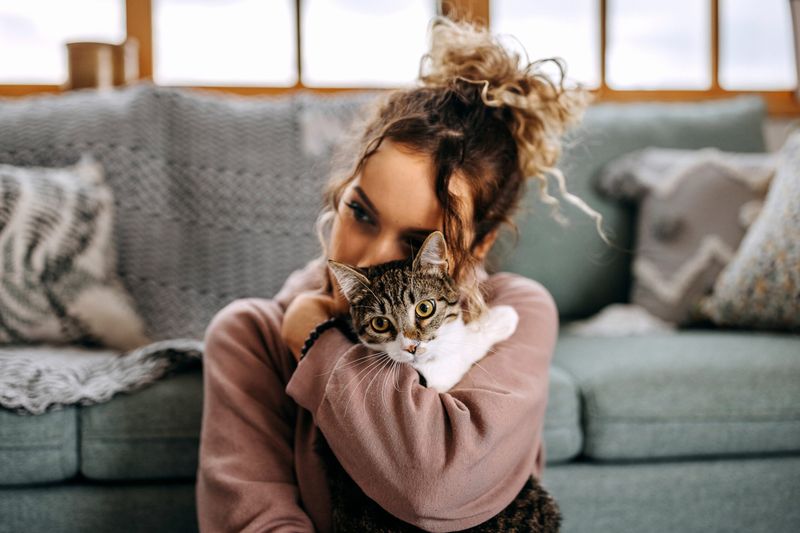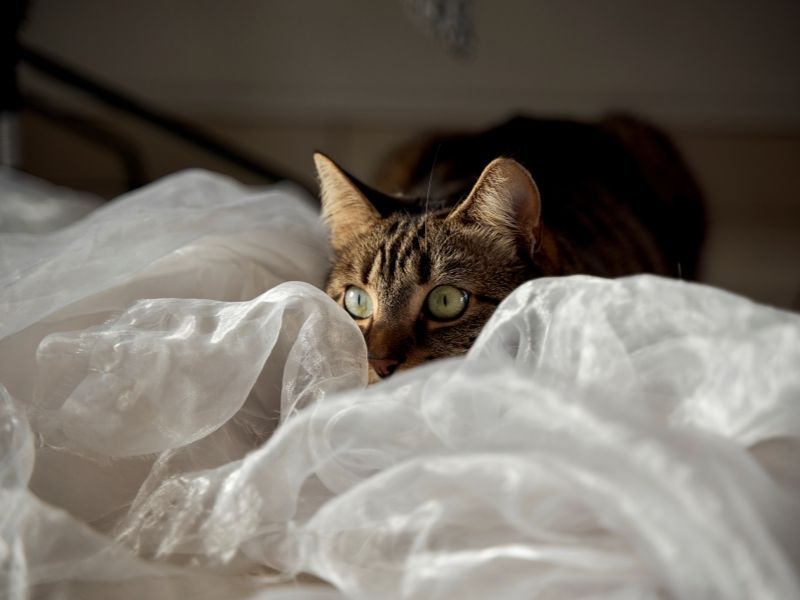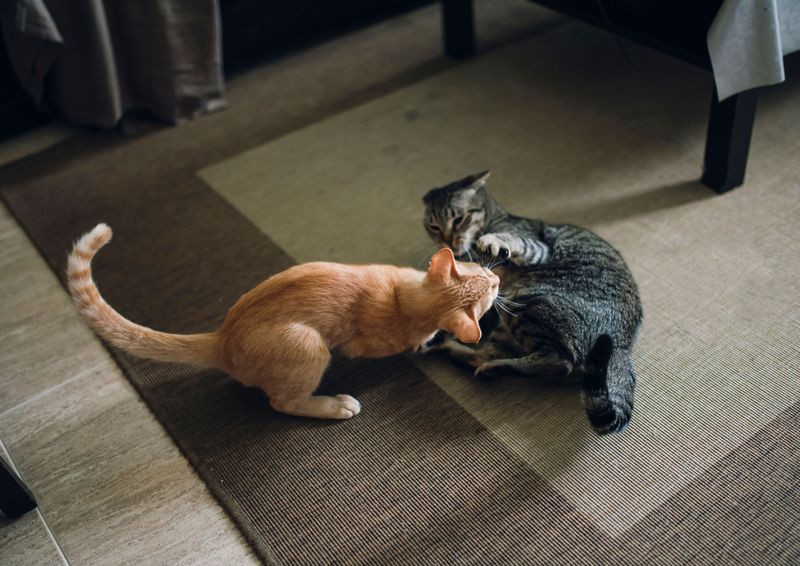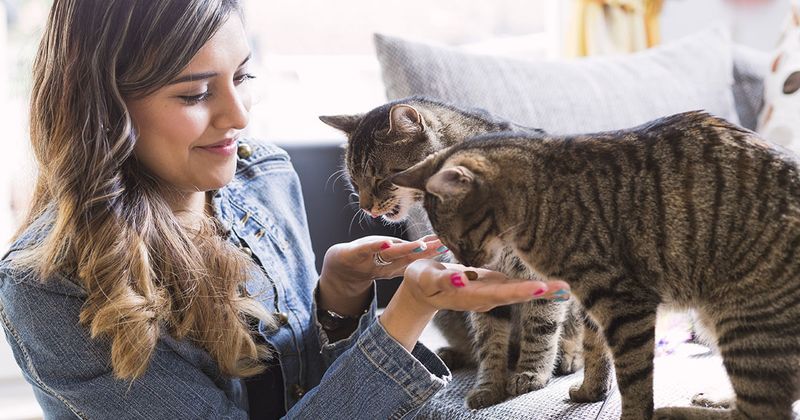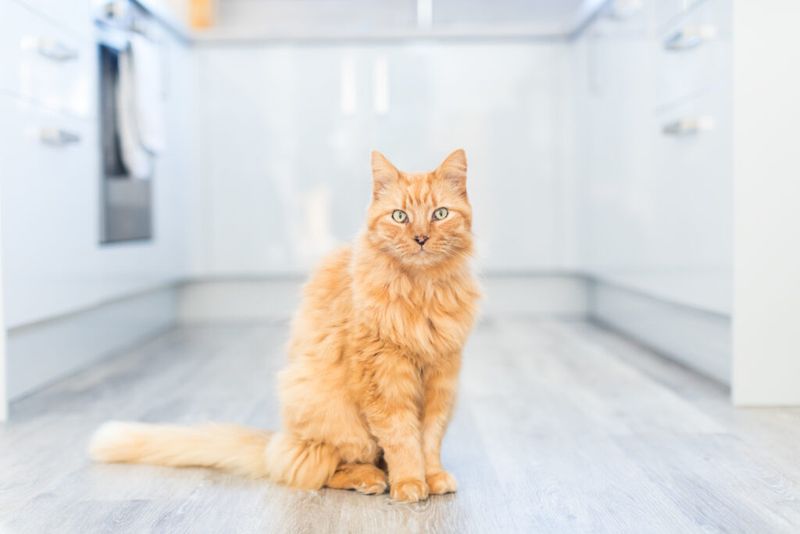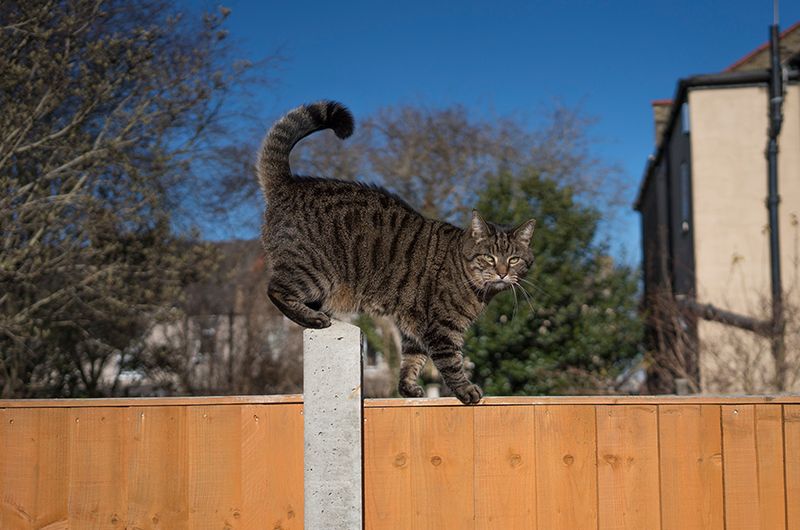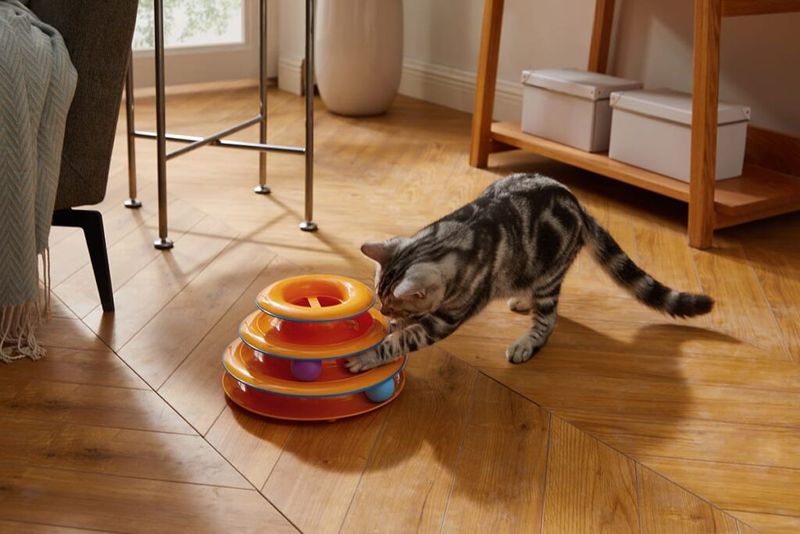📖 Table of Content:
- 1. Inconsistent Routine
- 2. Strong Scents and Harsh Cleaning Products
- 3. Lack of Vertical Space
- 4. Unfamiliar Visitors or Loud Noises
- 5. Boredom and Lack of Stimulation
- 6. Tense Relationships With Other Pets
- 1. Maintain a Consistent Routine
- 2. Use Cat-Safe Cleaning and Scent Products
- 3. Create Vertical Territory
- 4. Offer a Quiet, Safe Space
- 5. Provide Enrichment and Play
- 6. Manage Inter-Pet Dynamics
You adore your cat, so it’s only natural that you want them to feel safe, content, and comfortable at home. But unlike dogs or humans, cats often suffer in silence. Their stress signals can be incredibly subtle—masked by instinctive behaviors that make them appear aloof or simply “quirky.”
While you may not notice the signs right away, hidden stressors can accumulate and affect your cat’s physical and emotional health over time. From environmental changes to interpersonal tension, many of the things that bother your cat aren’t immediately obvious. Left unaddressed, these issues can lead to behavioral changes like hiding, aggression, or even illness.
The good news? You can take simple yet powerful steps to help your feline friend feel secure and happy. By identifying these hidden sources of stress and adjusting your home environment accordingly, you’ll foster a peaceful space where your cat can thrive. Read on to uncover the secrets behind feline anxiety—and discover how to turn your home into a calming sanctuary.
1. Inconsistent Routine
Routines might seem dull to us, but to your cat, they’re comforting anchors in a world they don’t fully control. When meals, playtimes, or cuddle sessions shift unpredictably, your cat may feel insecure and unsure of what to expect next. This unpredictability can translate into stress behaviors like excessive grooming, nighttime restlessness, or even food refusal. It’s not that your cat is stubborn—it’s that they’re hardwired to prefer the familiar. Just as we find reassurance in daily habits, cats need structure to feel safe. Disruptions like travel, guests, or even a new work schedule can ripple through their emotional state. Over time, inconsistent routines may erode the trust your cat places in their environment.
2. Strong Scents and Harsh Cleaning Products
Household smells that seem pleasant to you may be overpowering or harmful to your cat. With a sense of smell about 14 times more powerful than ours, cats can be distressed by perfumes, air fresheners, and essential oils. Many common products—like pine-scented cleaners or citrus sprays—contain compounds that are toxic to cats. Even if they don’t cause direct harm, the lingering scent can create ongoing discomfort. Cats may avoid areas that smell too strongly or behave oddly after exposure. Something as simple as mopping the floor could unknowingly turn a favored napping spot into an avoidance zone. Switching to unscented or pet-safe products can reduce this sensory burden dramatically.
3. Lack of Vertical Space
Every cat deserves the chance to survey their domain from a high, secure perch. Without vertical territory like shelves or cat trees, your feline may feel stuck in vulnerable ground-level zones. Instinctually, cats seek out elevation to observe potential threats and escape from chaos. In homes without climbing opportunities, cats may become skittish or overprotective of corners and under furniture. They might also lash out at other pets or even humans due to heightened stress. Offering vertical space helps cats establish a hierarchy and provides a peaceful retreat. The ability to “own” elevated areas gives them a greater sense of security and mental stimulation.
4. Unfamiliar Visitors or Loud Noises
Visitors might be exciting for you, but for your cat, they can represent danger and unpredictability. Whether it’s the doorbell ringing, a vacuum roaring to life, or a guest wearing unfamiliar cologne, these disruptions can shake your cat’s sense of calm. Unlike dogs, most cats don’t enjoy meeting new people or being the center of a social event. Sudden noises can trigger a fight-or-flight response, often sending them scrambling under the bed. Even when the noise ends, the emotional residue can linger for hours or days. A cat may associate certain rooms or times of day with stress based on past experiences. To them, these moments aren’t minor—they’re seismic.
5. Boredom and Lack of Stimulation
A cat’s mind is just as active as its body—and when neither is engaged, problems arise. Left to their own devices in an unstimulating environment, cats can spiral into boredom and restlessness. You might notice them knocking things over, meowing excessively, or attacking your feet out of nowhere. These are all cries for attention and activity. Even indoor cats retain the hunter’s drive and need to “chase,” “stalk,” and “pounce.” Without puzzles, toys, or structured play, they’ll invent their own—and that usually means trouble. Preventing boredom isn’t just about entertainment; it’s about preserving your cat’s well-being.
6. Tense Relationships With Other Pets
Inter-cat or interspecies tension can be one of the most chronic and damaging stressors in a multi-pet household. When pets don’t get along—or merely tolerate one another at best—there’s a constant low-level strain that weighs heavily on your cat. Even subtle signs like blocking access to a litter box, stealing food, or frequent staring can foster anxiety. You may not notice these passive-aggressive interactions, but your cat absolutely does. If escape routes or personal space are limited, it can create a pressure-cooker environment. Over time, this tension may manifest as urinary issues, hiding, or aggression toward humans. A peaceful home begins with balanced pet dynamics and respect for individual boundaries.
1. Maintain a Consistent Routine
Consistency is a gift you can give your cat every single day. Feeding them at the same time each morning or setting aside a nightly play session brings a comforting rhythm to their life. Cats begin to anticipate events, which reduces uncertainty and boosts confidence. Predictable routines also support better digestion, sleep, and behavior. Even during changes like vacations or new work hours, keeping elements of the old routine can ease transitions. Think of your schedule as a source of emotional stability for your pet. When life feels predictable, your cat feels safe.
2. Use Cat-Safe Cleaning and Scent Products
A clean home doesn’t have to come at the expense of your cat’s comfort. Opting for unscented or pet-friendly products can drastically reduce olfactory stress. Look for cleaners labeled non-toxic for pets or use natural alternatives like diluted vinegar. Avoid burning candles or diffusing essential oils without knowing their impact on feline health. If you enjoy fragrance, keep it confined to rooms your cat doesn’t frequent. Monitoring your cat’s behavior after cleaning is a good way to detect discomfort. Prioritizing their sensitive nose shows respect for their unseen boundaries.
3. Create Vertical Territory
Designing a space that extends upward can completely transform your cat’s relationship with your home. Cat trees, climbing shelves, and window hammocks allow for exploration and resting high above the chaos. These vertical spots give cats a sense of control and enable them to withdraw when overstimulated. High places also provide a break from other pets or noisy humans. Even placing a cozy blanket on top of a bookshelf can make a difference. Rotating these spaces and enriching them with scent or toys can add variety. Elevated territory equals emotional freedom.
4. Offer a Quiet, Safe Space
Sanctuary is a basic feline need, and your home should always include a place your cat can call their own. Choose a quiet corner, closet, or under-the-bed nook where they can decompress undisturbed. Fill it with familiar smells, soft textures, and minimal human traffic. Even confident cats appreciate solitude after an active or overstimulating day. A safe space signals to your cat that they have autonomy and a retreat if needed. This security helps reduce anxiety in everyday life. It’s not hiding—it’s healing.
5. Provide Enrichment and Play
Interactive play is more than just fun—it’s therapy for your cat’s brain. Wand toys, feather teasers, and treat puzzles satisfy instincts and keep boredom at bay. Rotating toys and incorporating “hunting” games mimic natural behaviors and provide purpose. You don’t need expensive gadgets; even a crumpled paper ball or cardboard box will do. Scheduled playtime strengthens your bond and builds trust. Enrichment also helps prevent behavioral issues like overgrooming or aggression. Think of it as mental nutrition your cat can’t live without.
6. Manage Inter-Pet Dynamics
Creating harmony among pets takes time, observation, and patience. Begin by ensuring each animal has its own resources—litter boxes, food bowls, beds, and hiding spots. Use calming pheromone diffusers like Feliway to reduce territorial tension. Keep introductions slow and monitor interactions to avoid building resentment. If conflict arises, separate animals temporarily and rebuild trust with positive reinforcement. Watch for body language cues like ear position or tail flicking that indicate discomfort. Your leadership sets the tone, so model calm and balanced behavior during disputes.

